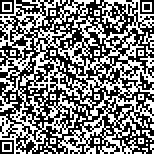本文已被:浏览 515次 下载 374次
投稿时间:2020-04-27 网络发布日期:2021-01-20
投稿时间:2020-04-27 网络发布日期:2021-01-20
中文摘要: 目的 对比腹横肌平面阻滞和骶管阻滞在小儿全麻下腹腔镜疝囊高位结扎术中的临床应用效果。
方法 以2018年1月至2019年9月92例全麻下腹腔镜疝囊高位结扎术小儿为研究对象,随机数字法分为腹横肌平面阻滞组(共46例,接受全麻+经腹横肌平面阻滞麻醉)和骶管阻滞组(共46例,接受全麻+骶管阻滞麻醉)。对比分析腹横肌平面阻滞组和骶管阻滞组的手术相关情况、术中相关监测指标、术后自控舒芬太尼(基础量基础上追加)消耗量、疼痛改良面部表情评分法(FLACC)评分、术后麻醉不良反应和肠胃道功能恢复情况等观察指标的差异。
结果 腹横肌平面阻滞组的术后苏醒时间和术后出室时间短于骶管阻滞组(P均<0.01);手术开始时和手术结束时,腹横肌平面阻滞组的平均动脉压高于骶管阻滞组(P均<0.05),而心率低于骶管阻滞组(P均<0.05);在术后 6 h内,腹横肌平面阻滞组的术后自控舒芬太尼追加消耗量、FLACC评分均高于骶管阻滞组(P均<0.05),但在术后12 h、术后18 h、术后24 h三个时点,腹横肌平面阻滞组和骶管阻滞组的术后自控舒芬太尼消耗量、FLACC评分比较差异无统计学意义(P均>0.05);两组的术后并发症发生率比较差异无统计学意义(P>0.05),但腹横肌平面阻滞组的导尿管拔除时间、肛门排气时间均短于骶管阻滞组(P均<0.01)。
结论 腹横肌平面阻滞与骶管阻滞在小儿全麻腹腔镜疝囊高位结扎术应用中各有优劣,应用腹横肌平面阻滞,利于患儿术中生命体征保持、术后苏醒和术后肠胃道功能恢复,但应用骶管阻滞的术后短期镇痛效果更佳,可减少术后麻醉药物应用量。
中文关键词: 腹横肌平面阻滞 骶管阻滞 小儿 全麻 疝囊高位结扎术,腹腔镜
Abstract:Objective To compare the clinical effect of transversus abdominis plane block and sacral block in laparoscopic high ligation of hernia sac under general anesthesia in children.
Methods A total of 92 children received laparoscopic appendectomy under general anesthesia from January 2018 to September 2019 were selected as study objects and randomly divided into transverus abdominis plane block group (n=46,received general anesthesis plus transverus abdominis plane block anesthesia) and sacral block group (n=46,received general anesthesis plus sacral block anesthesia).The operation related conditions,intraoperative monitoring indexes,postoperative self-control sufentanil consumption(add on the basic amout),pain FLACC score,postoperative anesthesia adverse reactions and gastrointestinal function recovery were compared and analyzed between two groups.
Results The postoperative wake-up time and time out of the observation room of transverus abdominis plane block group were shorter than those of sacral block group (all P<0.01).At the beginning and end of the operation,the mean arterial pressure of transverus abdominis plane block group was higher than those of the sacral block group (all P<0.05),while the heart rate of transverus abdominis plane block group was lower than that of the sacral block group(all P<0.05).Within 6 hours after operation,the additional consumption of sufentanil and FLACC score in transverus abdominis plane block group were higher than those in sacral block group(all P<0.05).There was no difference in the additional consumption of sufentanil and FLACC score at the three time points of 12 h,18 h and 24 h after operation between the two groups and no significant difference in the incidence of postoperative complications between the two groups (all P>0.05).
The time of catheter removal and anal exhaust in transverus abdominis plane block group were lower than those in sacral block group (all P<0.01).
Conclusions There are advantages and disadvantages of transverus abdominis plane block and sacral block in children′s laparoscopic high ligation of hernia sac under general anesthesia.The application of transverus abdominis plane block is conducive to the maintenance of vital signs,postoperative wake-up and the recovery of gastrointestinal function, but the application of sacral block has better short-term analgesic effect,which can reduce the amount of postoperative anesthetic drugs.
keywords: Transversus abdominis plane block Sacral block Children General anesthesia High ligation of hernia sac,Laparascopic
文章编号: 中图分类号:R614.2 R726.1 文献标志码:B
基金项目:徐州市科技项目(KC16SL123)
| Author Name | Affiliation |
| SHI Xuan-yu,WU Xiao-le,DU Bing,WANG Hao,ZHANG Feng-chao | Department of Anesthesiology,Xuzhou Children′s Hospital,Xuzhou,Jiangsu 221000,China |
引用文本:
石轩雨, 吴小乐, 杜冰, 王浩, 张奉超.腹横肌平面阻滞与骶管阻滞在小儿全麻下腹腔镜手术中的应用对比[J].中国临床研究,2021,34(1):69-73.
石轩雨, 吴小乐, 杜冰, 王浩, 张奉超.腹横肌平面阻滞与骶管阻滞在小儿全麻下腹腔镜手术中的应用对比[J].中国临床研究,2021,34(1):69-73.
